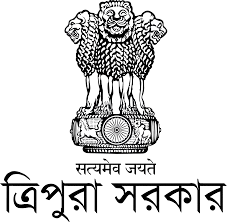


Fashion Design & Technology(FD & T)
Fashion Design & Technology is a field that combines creative design with technological advancements to create and produce fashion apparel and accessories. Here’s an overview of the Fashion Design & Technology trade:
Overview
• Duration: 01 years
• Eligibility Criteria: Candidates should have passed the 10th class from a recognized board.
• Objective: To equip students with the skills needed for designing, creating, and managing fashion collections, incorporating both artistic design principles and technological tools.
Key Learning Areas
1. Fashion Design:
• Concept Development: Skills in developing fashion concepts, creating mood boards, and researching trends.
• Sketching and Illustration: Techniques for sketching fashion designs and creating detailed illustrations using both traditional and digital methods.
• Pattern Making: Learning how to create and modify patterns for garments, including drafting and draping techniques.
2. Textile Science:
• Fabric Knowledge: Understanding different types of fabrics and materials, their properties, and how they influence garment design and production.
• Textile Technology: Knowledge of textile production processes, including weaving, knitting, and dyeing.
3. Garment Construction:
• Sewing Techniques: Proficiency in various sewing techniques and garment construction methods, including stitching, finishing, and fitting.
• Tailoring: Advanced skills in tailoring and customizing garments for fit and style.
4. Fashion Technology:
• CAD Software: Using Computer-Aided Design (CAD) software for fashion design, pattern making, and garment visualization.
• 3D Modeling: Creating 3D models of garments to visualize designs and make adjustments before production.
5. Fashion Merchandising:
• Marketing: Understanding fashion marketing principles, including branding, market research, and promotional strategies.
• Retail Management: Skills in managing fashion retail operations, including inventory control, customer service, and sales strategies.
6. Trend Analysis:
• Forecasting: Analyzing fashion trends and predicting future trends based on market research, cultural influences, and industry movements.
7. Sustainability:
• Eco-Friendly Practices: Incorporating sustainable practices in fashion design and production, including the use of eco-friendly materials and ethical manufacturing processes.
Career Opportunities
1. Fashion Designer:
• Roles: Creating original clothing designs, developing collections, and working with manufacturers to bring designs to market.
2. Pattern Maker:
• Roles: Creating and altering patterns for garments, ensuring accurate fit and design.
3. Fashion Merchandiser:
• Roles: Managing fashion retail operations, including product selection, marketing, and sales.
4. Textile Technologist:
• Roles: Working with fabrics and materials to develop new textiles and improve existing ones.
5. Fashion Illustrator:
• Roles: Producing visual representations of fashion designs for presentations and marketing materials.
6. Costume Designer:
• Roles: Designing costumes for theater, film, and television productions.
Conclusion
The Fashion Design & Technology trade provides a comprehensive education in both creative and technical aspects of fashion. With training in design principles, garment construction, textile science, and fashion technology, individuals are well-prepared for a variety of roles within the fashion industry. The integration of technology and sustainability practices ensures that graduates are equipped to meet the evolving demands of the fashion world, offering a range of career opportunities in design, merchandising, and textile innovation.






